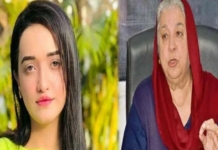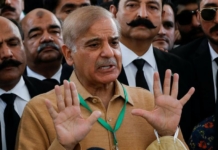The legend of Mirza-Sahiban has warmed the hearts of millions of Punjabis for centuries like Heer-Ranjha and Sohni-Mahiwal, said to be the fictional and famous romantic characters of Punjab.
But unlike Sohni and Heer, a controversy revolved around the character of Sahiban in the tragic romance that happened in Sandal Bar – one of the four bars (geographical regions) of western Punjab – and considered as one of the best creations of Punjabi literature.
It is said that Pilu, a 16th-17th century Punjabi poet from Dhun Chakwal, pinned the tragic romance. Hafiz Barkhurdar, a 17th century Sufi Jat poet from Takhat Hazara Sargodha, later developed the story further.
Countless Punjabi poets and storytellers for over four centuries have been writing and developing the story in their own way and a majority of them blamed Sahiba for disloyalty in a sense that she sided with her brothers at a critical moment, willingly or unwillingly, resulting in the murder of Mirza at the hands of her clan.
It is widely believed that a folk singer in Punjab only establishes authority on gaiki [singing] after having a grip on the singing of Mirza-Sahiban’s lyrics. Hence, from Alam Lohar, Gurmit Bawa, Shaukat Ali, Kuldip Manak to Ranjit Bawa, Ammy Virk, Himmat etc, every vocalist from the east and west Punjab proudly sang the tale, admiring Mirza and criticizing Sahiban.
As per legend, Mirza and his mare “Bakki” are the heroes of the love story and Sahiban has been blamed for breaking the arrows of his beloved when she saw her brothers approaching them in the jungle after she eloped from her house in Kheiwa – a village of Jhang Punjab – with Mirza, who fell asleep being tired from the long run.
“It is not true that Punjabi society is male chauvinist and a slight criticism on Sahiban symbolises overall weakness and disloyalty of woman in our literature,” believed Chand Shakeel, a young poet and teacher at Government College Samundri.
Amar Sing Shaunki (1916 – 1981), he said, would sing in praise of Sahiban and people of Punjab would travel miles to listen to him.
Riffat Waheed, a Punjabi poetess, visualized the role of Sahiban in a different way.
“Loko laj si pali apnay veeran di. Aiwain tay nae teer si bhnay Sahiban nay.”
(In-fact Sahiban protected the respect of her brothers, the reason behind the breaking of arrows of Mirza)
Iqbal Qaisar, a known Punjabi researcher and writer from Kasur, said it was the fact that societies have long been victimizing women for treachery, weakness and other demerits. But, he said, the narrative was changed for last many decades and Sahiban’s role as a woman was being seen differently now.
He quoted verses from the historic series ‘Vikings’ to establish his point that it was not only Punjab but West also blamed women as villains in old literature.
“A creaking bow, a burning flame…Tide on the ebb, new ice, a coiled snake. The sons of a king, an ailing calf, a witch’s flattery. No man should be such a fool to trust these things. No man should trust the word of a woman. The hearts of women were turning on a whirling wheel. To love a fickle woman is like setting out…Over ice with a two-year-old colt …Or sailing a ship without a rudder.”








Comments are closed.